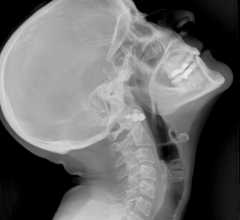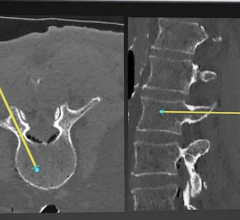
August 13, 2015 — In a step towards more widespread use of terahertz radiation — the no-man’s land of the electromagnetic spectrum — researchers have designed a device that can convert a DC electric field into a tunable source of terahertz radiation. Their results are published this week in the Journal of Applied Physics.
Terahertz radiation has long stymied researchers. Optical technologies can finagle light in the shorter-wavelength visible and infrared range, while electromagnetic techniques can manipulate longer-wavelength radiation like microwaves and radio waves. Terahertz radiation, on the other hand, lies in the gap between microwaves and infrared, whether neither traditional way to manipulate waves works effectively. As a result, creating coherent artificial sources of terahertz radiation in order to harness it for human use requires some ingenuity.
Difficulties of generating it aside, terahertz radiation has a wide variety of potential applications, particularly in medical and security fields. Because it's a non-ionizing form of radiation, it is generally considered safe to use on the human body. For instance, it can distinguish between tissues of different water content or density, making it a potentially valuable tool for identifying tumors. It could also be used to detect explosives or hidden weapons, or to wirelessly transmit data.
The new device exploits the instabilities in the oscillation of conducting electrons at the device's surface, a phenomenon known as surface plasmon resonance. To address the terahertz gap, the team created a hybrid semiconductor: a layer of thick conducting material paired with two thin, two-dimensional crystalline layers made from graphene, silicene (a graphene-like material made from silicon instead of carbon) or a two-dimensional electron gas. When a direct current is passed through the hybrid semiconductor, it creates a plasmon instability at a particular wave number. This instability induces the emission of terahertz radiation, which can be harnessed with the help of a surface grating that splits the radiation.
By adjusting various parameters, such as the density of conduction electrons in the material or the strength of the DC electric field, it is possible to tune the cutoff wave number and, consequently, the frequency of the resulting terahertz radiation.
"[Our work] demonstrates a new approach for efficient energy conversation from a DC electric field to coherent, high-power and electrically tunable terahertz emission by using hybrid semiconductors," said Andrii Iurov, a researcher with a dual appointment at the University of New Mexico's Center for High Technology Materials and the City University of New York. "Additionally, our proposed approach based on hybrid semiconductors can be generalized to include other novel two-dimensional materials, such as hexagonal boron nitride, molybdenum disulfide and tungsten diselenide."
Other labs have created artificial sources of terahertz radiation, but this design could enable better imaging capabilities than other sources can provide. "Our proposed devices can retain the terahertz frequency like other terahertz sources but with a much shorter wavelength for an improved spatial resolution in imaging application as well as a very wide frequency tuning range from a microwave to a terahertz wave," said Iurov.
For more information: www.scitation.aip.org


 July 18, 2024
July 18, 2024 







